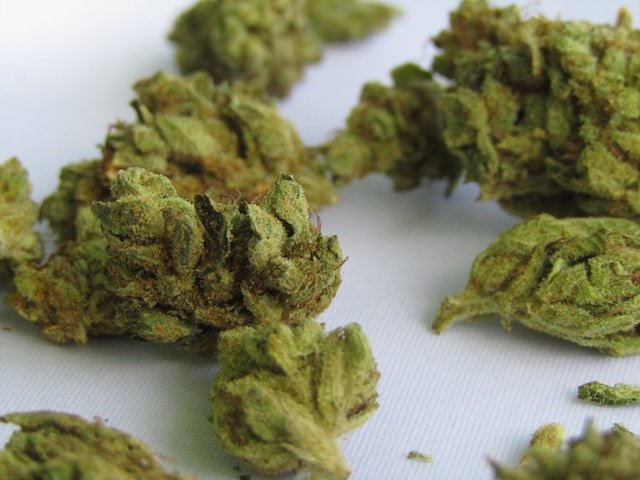Although people have used marijuana for both medicinal and entertainment purposes for thousands of years, scientists have just lately learned about the “entourage effect.” This phenomenon explains how different terpenes and cannabinoids work together to create unique strains that have specific effects on the body and mind.
Cannabis contains cannabinoids, which are significant chemical substances that interact with receptors in the body’s endocannabinoid system. Tetrahydrocannabinol (THC), a cannabinoid, is well known for producing the “high” related to marijuana. Other cannabinoids with various physiological effects include cannabigerol (CBG) and cannabidiol (CBD). Similar chemical substances known as terpenes are present in almost all plants on Earth.
They are in charge of giving plants their unique flavor and aroma. Terpenes in marijuana also have a significant impact on how a strain affects the body and mind. When eating marijuana, various terpene and cannabinoid mixtures can have radically diverse effects. Understanding these interactions is critical to choosing strains that deliver specific medical benefits or entertainment .
Cannabinoids: Understanding the Different Players in Weed
When pondering cannabis strains, tetrahydrocannabinol (THC) usually comes to mind as the primary ingredient. Given that THC is the most well-known cannabinoid and what provides cannabis its intoxicating characteristics, it is easy to understand why. But did you know that there are over 100 unique cannabinoids in marijuana?
Each one affects the body and psyche differently. Some of the most frequent cannabinoids found in marijuana are listed below:
– THC: As previously mentioned, THC is the primary factor in the majority of users’ “highs.” It interacts with CB1 receptors in the brain, resulting in euphoric, calming, and altered perception feelings.
– CBD (cannabidiol): Unlike THC, CBD doesn’t provide a “high.” Instead, it engages with other receptors in the body that regulate a variety of bodily functions, including the experience of pain and the response to inflammation. CBD has been studied extensively for its potential medical benefits.
– CBG (cannabigerol): This lesser-known cannabinoid is thought to have anti-inflammatory properties and may be useful in treating conditions like glaucoma and inflammatory bowel disease.
– CBN (cannabinol): CBN is formed when THC breaks down over time or when exposed to oxygen. It’s not as potent as THC but still has mild psychoactive effects.
Depending on elements such as genetics and growing conditions, each strain will contain varied concentrations of these cannabinoids.
Indica vs Sativa: The Importance of Cannabinoid Ratios in Popular Strains
You may hear terms like “indica” or “sativa” when looking at Washington DC dispensary menus or talking with budtenders about different strains. These refer to two broad categories of cannabis plants thought to have different effects on the body.
While indica strains are usually linked to relaxation and slumber, sativa strains are more energetic and uplifting. Current research suggests that these differences , however, might not be as sharp as originally thought.
Instead, it’s thought that a strain’s effects are determined by the ratio of the various cannabinoids in it. For instance, a strain with equal amounts of THC and CBD may result in a less psychoactive high than one with a higher THC to CBD ratio. It’s important to consider a strain’s cannabinoid profile rather than just depending on its indica or sativa categorization (which is shown on the label or online) .
Popular strains that are known for having high cannabinoid concentrations include:
– Sour Diesel (high in THC)
– Charlotte’s Web (high in CBD)
– Blue Dream (balanced THC: CBD ratio
– Cannatonic (high in both CBD and CBN)
Terpenes
Terpenes are organic compounds that give plants their aroma and flavor. Cannabis is one of the many plants that contain them. In weed, terpenes are responsible for different strains’ unique smells and flavors. Terpenes also play a role in the effects of a particular strain
What terpenes are and how they contribute to a strain’s effects?
When you smell a strain of weed, you’re smelling its terpenes. Terpenes interact with cannabinoids to create what’s known as the entourage effect – which we’ll explain later. But for now, it’s important to know that different combinations of terpenes can produce vastly different experiences when consuming weed.
For instance, weed strains from the District of Columbia that have lemon scents, such Lemon Haze and Lemon Skunk, usually contain the terpene limonene. Because limonene is thought to have anti-anxiety and anti-depressant properties, these strains are great for people looking for an uplifting and energising high.
However, indica-dominant strains like Granddaddy Purple or OG Kush typically contain myrcene as another common terpene. Users of myrcene may experience relaxing effects that make them feel at ease and couch-locked.
Common terpenes found in weed (myrcene, limonene, pinene, etc.)
Just in cannabis, there are around 100 different kinds of terpenes! However, some common ones include myrcene (earthy/musky scent), limonene (citrusy scent), pinene (pine/woodsy scent), linalool (floral/lavender scent), caryophyllene (peppery scent), and humulene (hoppy/earthy scent). different strains contain different levels of each terpene, each of which has unique advantages.
How different combinations of terpenes can create vastly different experiences?
Mixing particular terpenes with cannabis can alter the effects. For instance, a strain high in limonene and THC may offer people an energetic high, whilst a strain high in myrcene and CBD may have a calming effect.
Additionally, some strains may have multiple types of terpenes present in equal amounts, which can create complex flavors and aromas while producing unique effects. It’s important to find a strain that fits your desired experience by carefully examining its cannabinoid and terpene profile.
The Entourage Effect: How Different Cannabinoids and Terpenes Work Together
Have you ever thought why several weed strains can have such wildly dissimilar effects? The entourage effect, which describes how terpenes and cannabinoids combine to produce a synergistic impact that is larger than the sum of its parts, is the key to understanding everything.
Different cannabinoids and terpenes can interact with one another in ways that either intensify or change the effects of each one when combined in various concentrations. Simply put, think of the entourage effect as a group project.




